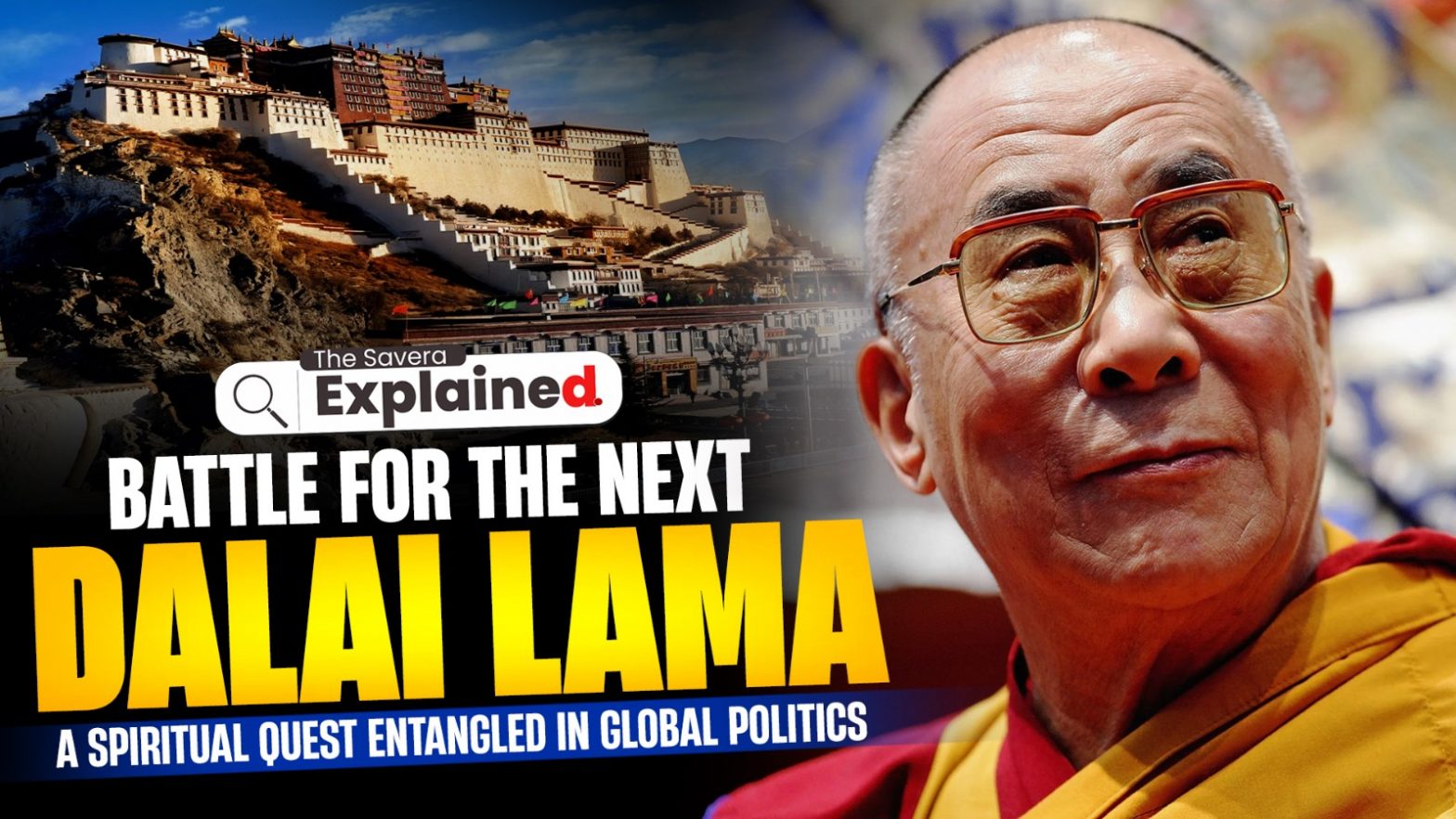
As the 14th Dalai Lama, Tenzin Gyatso, turns 90 on July 6, 2025, the peaceful Himalayan town of Dharamshala finds itself at the centre of a global debate.
The big question is: who will be the next Dalai Lama? But behind this spiritual matter lies a major political and geopolitical struggle—between Tibetan Buddhist traditions and the Chinese government’s growing interference.
However, the Dalai Lama has made it already clear that only the Gaden Phodrang Trust has the authority to choose his successor. Just days before his 90th birthday, he again reaffirmed this stance, stating no government or outside force has the right to interfere.
The Central Role of the Gaden Phodrang Trust
Reportedly, the Gaden Phodrang Trust, based in Dharamshala, is the spiritual and institutional body that the current Dalai Lama has authorised to oversee the process of identifying his reincarnation. This trust was originally the name of the Tibetan government set up by the 5th Dalai Lama in the 1600s. It ruled Tibet from the Potala Palace in Lhasa, combining both political and religious authority.
After the Chinese takeover of Tibet in 1950 and the Dalai Lama’s exile to India in 1959, the Gaden Phodrang was re-established as a spiritual office.
In 2011, the Dalai Lama stepped down from any political role, handing over authority to the elected Central Tibetan Administration. However, the Gaden Phodrang Trust was formalised as a non-profit to preserve his religious legacy—including the tradition of reincarnation.
How the Successor Is Traditionally Chosen
The traditional process to identify a new Dalai Lama is deeply spiritual and symbolic. After a Dalai Lama dies, monks use various spiritual methods to find the next incarnation.
Here’s how it typically works:
This sacred and deeply spiritual process led to the discovery of the current Dalai Lama in 1939, when he was just two years old.
This process takes decades. And China is unwilling to wait that long, then
What is China’s Strategy?
China, however, has its own plans. The Chinese government claims it has the right to manage all religious affairs, including the reincarnation of Tibetan lamas. In 2007, China passed a law saying that all reincarnations must be approved by the state. This move gives the Communist Party the final say on who becomes the next Dalai Lama.
China bases its claim on a 1793 Qing Dynasty rule involving the Golden Urn—a lottery system once used to select reincarnated lamas. While it was rarely used in the past, China insists this must be the only method going forward.
But the Dalai Lama has already rejected this. He has said his next incarnation will be born in a free country, outside of China’s control.
The Panchen Lama Case: A Warning Sign
The Panchen Lama controversy shows how far China might go. In 1995, the Dalai Lama identified a six-year-old boy, Gedhun Choekyi Nyima, as the 11th Panchen Lama. Soon after, the boy and his family were kidnapped by Chinese authorities and disappeared from public view.
China then appointed its own Panchen Lama, Gyaincain Norbu. But he is widely rejected by Tibetan Buddhists and the exile community. They see him as a state-backed puppet, lacking real spiritual legitimacy.
This case has made the Tibetan community even more determined to prevent the same from happening with the Dalai Lama’s succession.
What It Means for India and the World
The Gaden Phodrang Trust is based in India, and India has long hosted the Dalai Lama and the Tibetan exile community. For India, supporting the Trust is a sign of standing up for religious freedom. But if the next Dalai Lama is found in India, it could worsen already tense relations with China.
Other countries have also taken a stand. The U.S. passed the Tibetan Policy and Support Act of 2020, which allows sanctions on Chinese officials who interfere in the Dalai Lama’s succession. The European Parliament and other democracies have shown support for a Tibetan-led process.
Two Dalai Lamas?
All signs point to a situation where there could be two Dalai Lamas:
This would create a deep divide: one Dalai Lama accepted by the Tibetan people and the global Buddhist community, and another promoted by China for political control.
As the world watches this spiritual and political tug-of-war unfold, the real question becomes:
“Whose Dalai Lama will the world accept?”
Will it be the one chosen by monks and tradition, or the one selected by the Chinese state?
Either way, the decision will shape not just the future of Tibetan Buddhism—but also global geopolitics for years to come.
